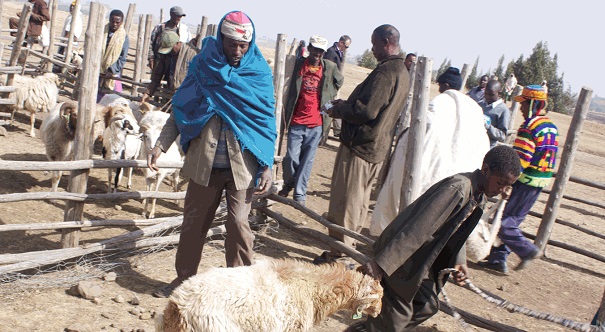
The government of Ethiopia and development partners on Jan. 17 launched the Humanitarian Requirements Document (HRD) for 2017.
By Eric Schroeder (World Grain) |
Washington, DC–The government of Ethiopia and international development partners are taking steps to address drought conditions in the southern and eastern parts of the country, according to a Jan. 30 Global Agricultural Information Network report from the U.S. Department of Agriculture (USDA).
According to the USDA, approximately 5.6 million people in Ethiopia will require food assistance as well as other forms of humanitarian support. In addition, neighboring countries such as Somalia and South Sudan are facing the possibility of food shortages.
The government of Ethiopia and development partners on Jan. 17 launched the Humanitarian Requirements Document (HRD) for 2017. The HRD outlines Ethiopia’s current needs and planned interventions to address the current drought conditions in the southern and eastern parts of the country.
The USDA noted in its report that the most recent drought comes on the heels of the country’s worst drought in 50 years, and has resulted in increased food and nutritional insecurity, livestock deaths, water shortages, as well as other humanitarian challenges.
READ: From Poverty to Profits: A Widow’s Story of Opportunities Seized and Futures Secured
The HRD calls for $948 million to support 5.6 million people with food and non-food assistance in pastoral lowland areas in the south and eastern parts of Ethiopia. People in that part of the country are struggling with drought conditions caused by the negative Indian Ocean Dipole, according to the USDA.
Meanwhile, on Jan. 29, the UN Under-Secretary-General called on the international community to immediately take steps to fund the HRD before it is too late.
“Food relief, consisting mainly of cereals (e.g. wheat and sorghum) and cooking oil, is the single biggest HRD intervention in terms of cost with an estimated price tag of $598 million,” the USDA said. “The next largest are nutrition at $105 million and water, sanitation and hygiene for $86 million. Other interventions include education, health, protection, shelter, and non-food items.”
Source: World Grain
——
Other stories:
- USAID Provides School Supplies for Students in Drought Affected Areas
- Integrated Family Health Program: USAID Support Saved Lives and Improved Family Health
